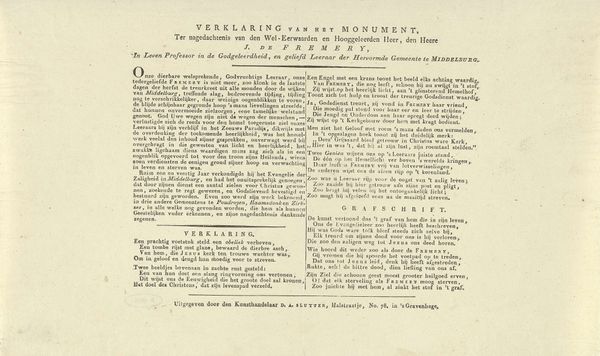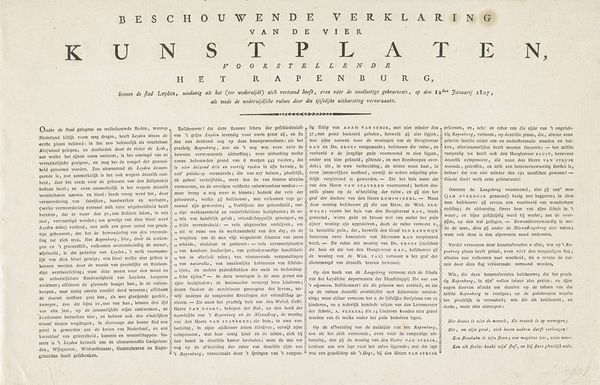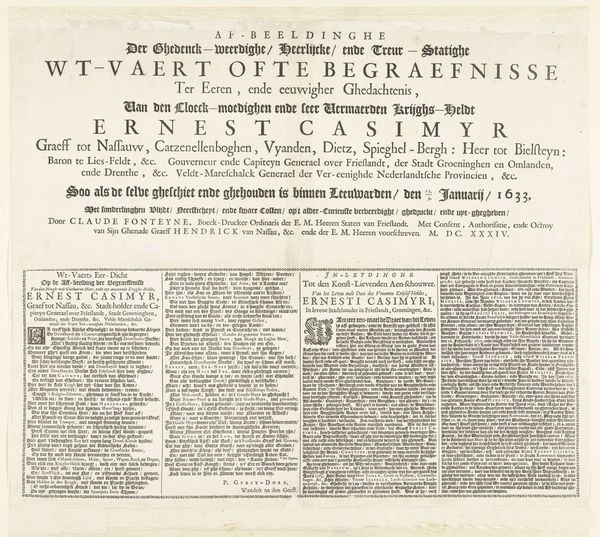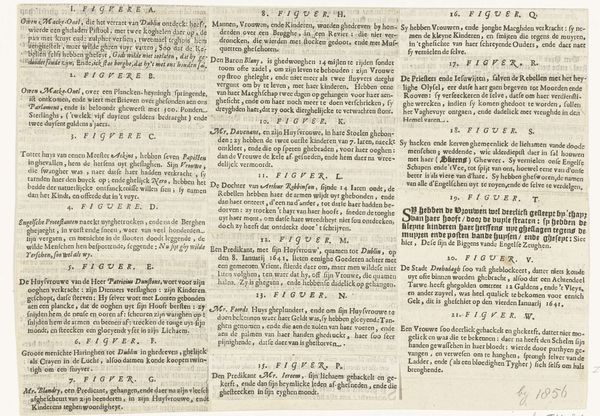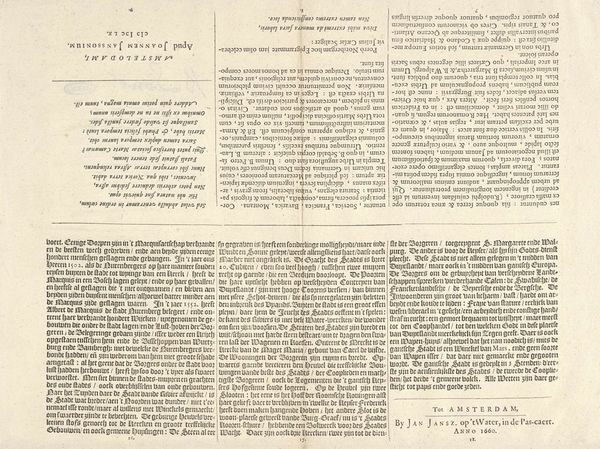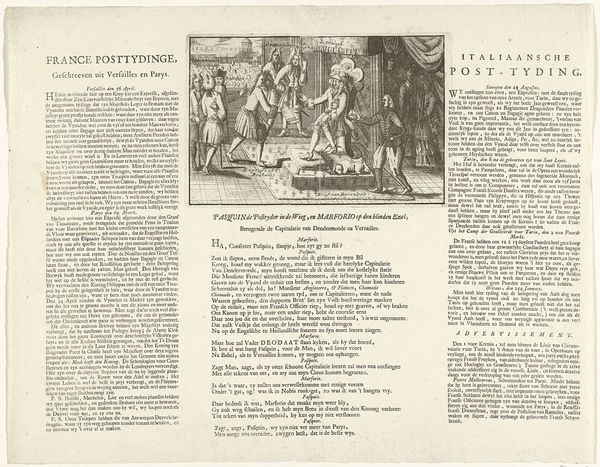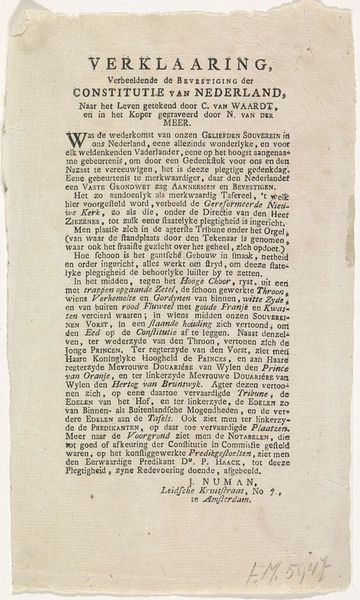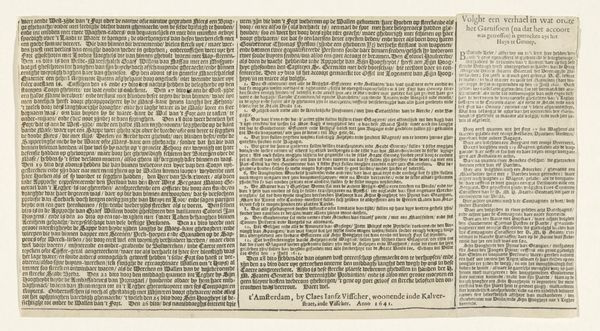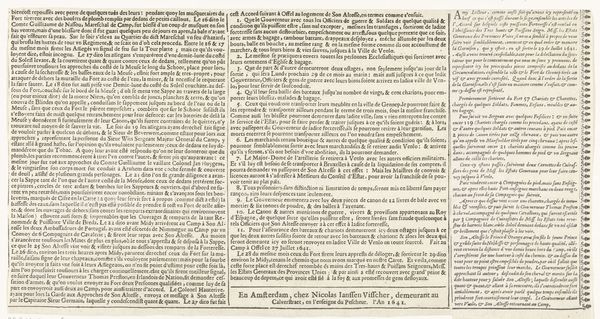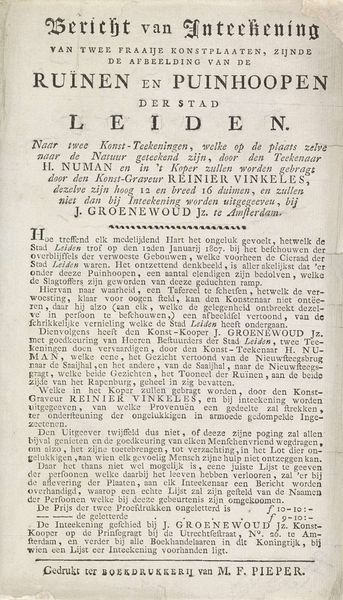
print, textile, typography, poster
#
newspaper
# print
#
textile
#
typography
#
poster
Dimensions: height 190 mm, width 223 mm
Copyright: Rijks Museum: Open Domain
Curator: Let's turn our attention to this printed sheet from 1821, titled "Tekstblad behoorende bij Monument voor B.G. Haverkamp," commemorating the Reverend B.G. Haverkamp. The typography immediately draws the eye, a testament to the skills of J.C. Hagedoorn, who published it. Editor: My first thought is: imposing! Look at how tightly packed the text is, those gothic fonts. It's practically a wall of words dedicated to this Haverkamp fellow. I wonder, was this displayed like a poster or something more intimate, like a memorial card? Curator: Given the details, likely as a broadside or poster, designed for public display. The text, a eulogy and symbolic interpretation of a memorial, invites a collective act of mourning. Notice the elaborate description offering explanations—it’s a deliberate attempt to control the narrative of his life. Editor: Right, a narrative sculpted in ink! What really strikes me is the contrast between the elaborate, almost baroque descriptions of virtue and the stark reality of death—you know, the "ashes to ashes" bit. It's very of its time, isn’t it? High drama meeting quiet sorrow. Curator: Precisely. And observe how loaded with allegory everything is: Faith holding the Cross, the censer representing prayers ascending, Time with its winged hourglass… these symbols wouldn’t have been merely decorative. Each carried substantial cultural weight, reinforcing religious dogma. Editor: Oh, absolutely. They were basically visual shorthand. What's fascinating is that this piece serves not just as a memorial, but as a lesson. It's telling everyone, “Here’s how a virtuous life should be lived, and here's how it will be remembered." Curator: And consider that the act of printing and distributing this, transforms individual grief into civic memory. The choice of typography, with its inherent solemnity, reinforces the gravity of the event. It's a form of cultural continuity made manifest. Editor: It really brings into focus how death was treated so publicly back then. No sugarcoating, just stark pronouncements and very public mourning rituals. You walk away from this knowing Reverend Haverkamp was deeply respected…and maybe slightly feared? Curator: Well, certainly regarded with considerable reverence. What endures is the sheer commitment to memorializing this man. It offers insight into both the period and the community that esteemed him so. Editor: Absolutely, a testament etched in ink. It's impressive and slightly overwhelming, that anyone could possibly live up to the standards that such monuments require.
Comments
No comments
Be the first to comment and join the conversation on the ultimate creative platform.

